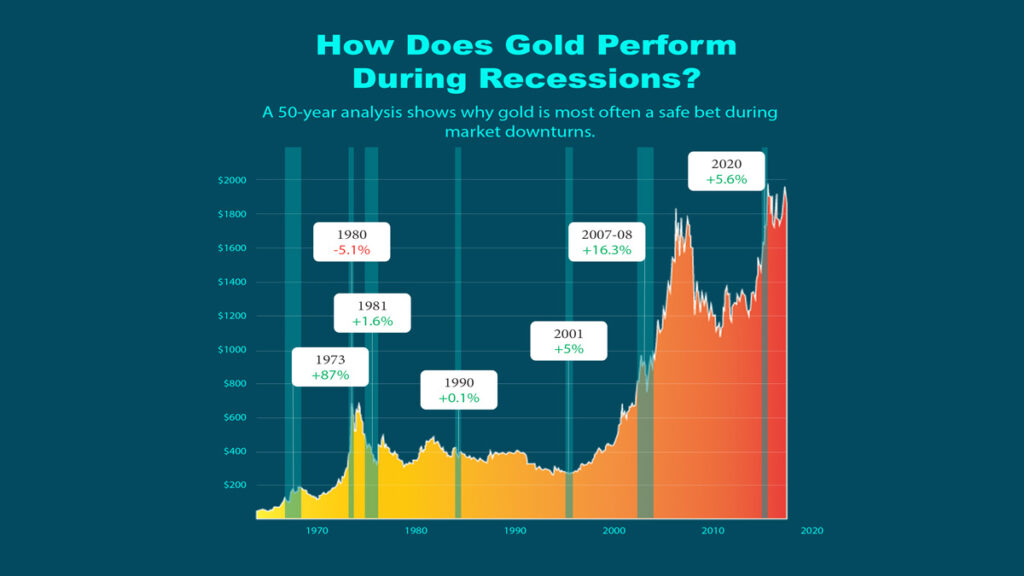
A 50-year chart analysis showing why gold is most often a safe bet during market downturns.
The chances of a recession climbed by more than 56%, according to the latest CNBC Fed Survey. Tariffs have replaced inflation as the greatest perceived economic threat, as systemic uncertainty arises out of a raging trade war. While consumer confidence and spending decline, experts are lowering their GDP growth expectations—a stark contrast to the optimistic forecasts from earlier in the year. With the Federal Reserve stuck waiting for Trump’s agenda to unravel, most respondents anticipate at least two rate cuts in 2025.
Tariffs Take Center Stage
The root of rising economic instability and a worsening outlook is a volatile tariff policy. What was once a cornerstone of the administration’s economic agenda has become a drag on growth, pulling stock indices down nearly 10%, pressuring businesses, and weighing on key indicators.
Previously, persistent inflation was analysts’ top concern. Now, the fallout from a multi-front trade war has turned tariffs into the leading threat. After the election, the economic outlook initially jumped as Trump 1.0 was credited with a booming economy.
However, as Barry Knapp of Ironsides Macroeconomics puts it, “Investors…are increasingly concerned the Trump agenda has gone off the rails due to trade policy. Consequently, the economic risks…are growing.”
Recession Odds Spike
One of the more alarming takeaways from the March CNBC Fed Survey is the drastic increase in recession fears. In January, survey respondents–analysts, strategists, and fund managers–put the probability of a recession at 23%. This figure represented a three-year low, suggesting experts were optimistic at the launch of the year.
This number soared to 36% in February as the corrosive effects of a haphazard tariff policy spread throughout the economy. The survey’s lowered forecast comes as President Trump and Treasury Secretary Scott Bessent refuse to rule out a recession, adding to investors’ concerns and hesitation.
👉 Related Read: What Happens to Gold Prices During a Recession?
GDP Outlook Drops
A rapidly declining GDP forecast is a key factor raising the likelihood of a recession. Just a month ago, the average GDP forecast was 2.4%. Now, it’s been cut to 1.7%, signaling a sharp decline in expected economic growth. This steep drop also ends a three-month streak of rising GDP projections.
The near-term outlook is even worse with the Atlanta Fed’s GDPNow estimate for Q1 plunging into negative territory from a high of nearly 4% in early February.
“There is meaningful downside to current estimates of 2025 GDP,” explains Neil Dutta, head of economic research at Renaissance Macro Research,
“The risks to consumers’ spending are skewed to the downside.” The CNBC Fed Survey indicates that GDP might not reach the desired 2% until 2026.
Rate Cuts on the Horizon
Trump’s whipsawing on tariff amounts, timelines, and targets directly feeds fiscal policy uncertainty as the Fed declined to change interest rates following their March meeting.
Despite this uncertainty, more than two-thirds of experts anticipate two or more rate cuts in 2025, probably coming later in the year.
These rate cuts are likely to accompany an increase in safe-haven demand as the returns on yielding assets decrease. Many analysts highlight how the combination of rising economic uncertainty and incoming rate cuts could act as a major tailwind for gold prices, which have recently surged past the $3,000 milestone.


